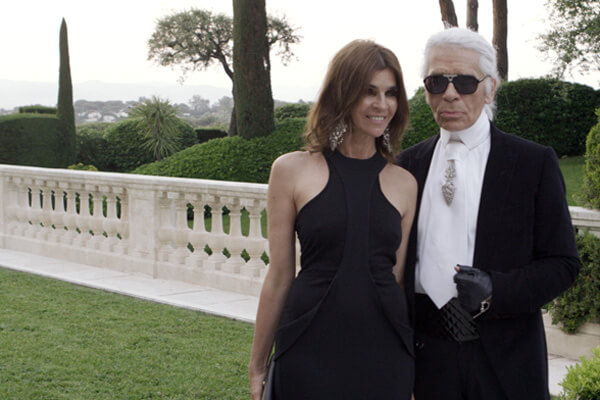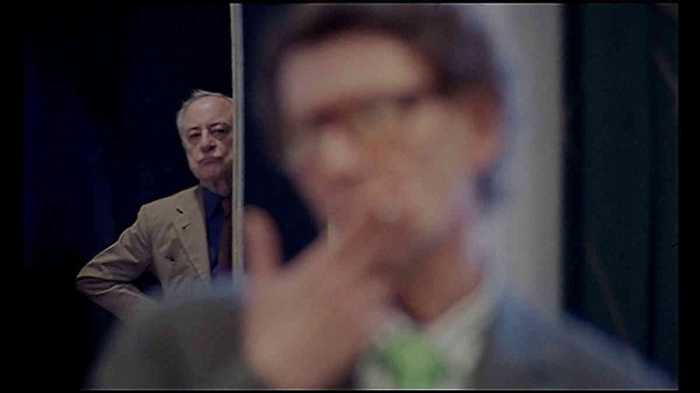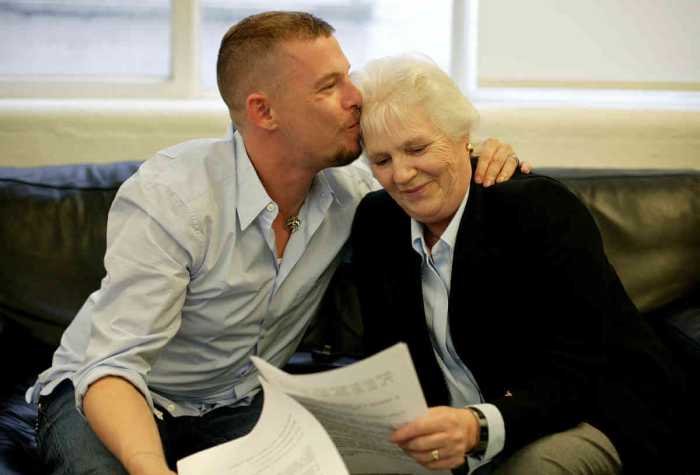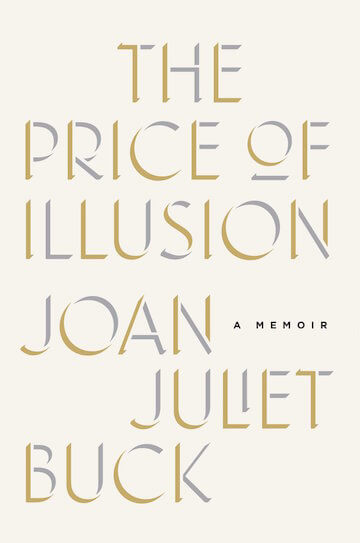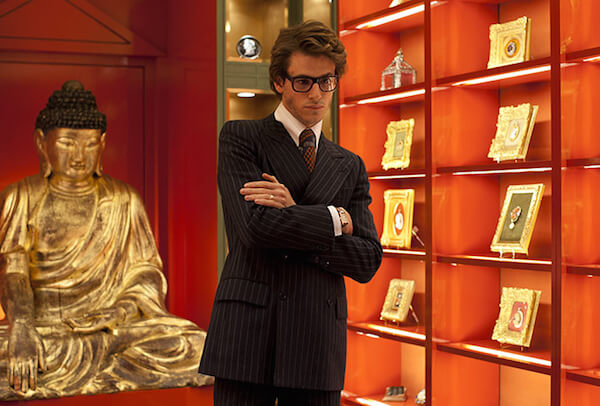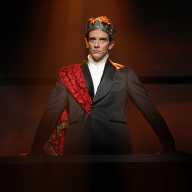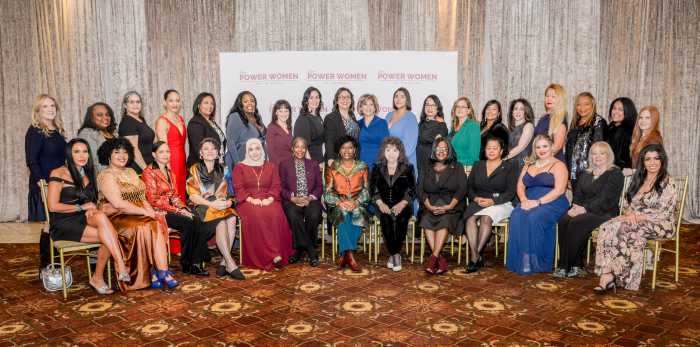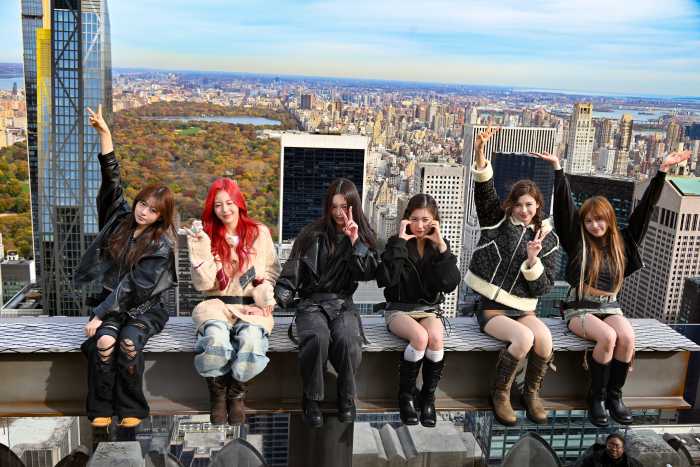Carine Roitfeld with Karl Lagerfeld in Fabien Constant’s “Mademoiselle C.” | COHEN MEDIA GROUP
For nigh on 20 years now, for those truly in the fashion know, Carine Roitfeld has been considered perhaps the world’s chicest woman. She began her career modeling in Paris at age 18, then became a stylist and journalist, then muse and consultant to designer Tom Ford at Gucci and Yves Saint Laurent. In 2001, she landed the coveted job of editor of Vogue Paris and turned every issue into an instant collector’s item through her daringly sexy layouts and unerringly stylish eye. Some may have thought she was finished when she left Vogue in 2011, but, instead she sprang back big-time with her own magazine, CR Fashion Book, the following year.
Filmmaker Fabien Constant has trained his lens on Roitfeld in the documentary “Mademoiselle C,” and interviewing her about it was a great way to kick off New York Fashion Week. With her smolderingly fierce jolie laide mien, whip-thin figure swathed in a white Celine tunic top, black Miu Miu skirt, her signature stilettos (also Celine), and general killer tawny allure, she presented one initially intimidating façade, but this was instantly broken by her genuinely inviting friendliness and down-to-earth openness.
The chicest woman in the world talks
Roitfeld is the type of charmer who initially asks you about yourself. When I told her that I once dabbled in fashion but got the hell out because of the viperish people in the biz, she said, “There are bitchy people everywhere. You have to have a carapace. People think fashion people are not nice, but when you see this film, it is about a real friendship between me and [her publisher] Stephen Gan. It goes back 15 years ago when we said, ‘Some day we are going to have a magazine together,’ because we always had so much fun. And it happened! He’s always wanted to protect me and let me sing and play, which I think is so nice. So friendship is possible. It may be rare, but in the film you see super ‘actors’ like Karl [Lagerfeld], Tom [Ford], and Riccardo [Tisci], and they are all still my friends.
“There are just some not nice people, so you need a carapace, which is a sort of protection, like sunglasses. You take the bad with the good, but, at the end of the day, I’m quite a nice person. Sometimes I suffer for it but it’s okay. I do what I want and I have my friends and family.”
Roitfeld has enjoyed a long relationship with former apparel mogul Christian Restoin, whom she’s never married, and has two children, Julia and Vladimir, who both took her surname.
“People think it’s impossible to raise a family in fashion because it makes you crazy, but, when my kids were young, I was always stopping work for their school, taking them to the dentist and my son to football,” she said. “So now, I’m very close with my kids because family is the most important thing to me, and now I have a granddaughter, so it’s getting bigger. It’s important, because it gives you strength even when you have a bad moment, as we all do.”
Roitfeld enjoyed “a very nice childhood. My father, Jacques, a film producer, was my biggest mentor. He was the most beautiful, charming, sexy dad. I was his princess and everything I did was to make him happy and proud of me. My mother was a real Parisian, which makes you immediately understand fashion when you are very young. It’s the way you live and what you see in shops, even if you are not shopping at Dior or Chanel. You know it exists and it’s in your DNA, seeing beautiful people and knowing couture and parfum. I remember my mother wearing a lot of Pucci and eyeliner, and I was always doing that for her, like painting for a child.”
Jacques Roitfeld, his daughter explained, “started the first erotico films, like ‘The School of Sex,’ but they were very soft, with a sweet little story. Soft porn but they were a beginning. Sex is good! In the photos I styled for Mario Testino, we tried to push a lot of sex in fashion magazines, but not in a tragic way. Sex has to be fun. Even if the girl is naked in the middle of the street, she’s still chic because she’s not suffering and wants to be there.”
I’ve noticed that the 1970s work of Yves Saint Laurent and photographer Helmut Newton are constant reference points in Roitfeld’s oeuvre and when I mentioned that, she responded, “Yes. Each morning when I think of what to wear to work, I think, ‘Well, I’m a Saint Laurent girl!’ It’s not just his clothes but his idea of a woman, this respect I have for Monsieur Saint Laurent, whose images with Newton are everything I love.
“I was not a top model but I learned the life of models, so when I work with them I know it’s not nice to be naked in front of everyone — and sometimes it’s cold. I respect and love them and am not jealous of them, even if they’re much younger, much better, much more everything than me. I’ve always liked models — they make me laugh and are always nice with me. I have a very good relationship with them and am very faithful, like with Lara Stone. I really made her, no?
“The business takes them and throws them away. I like new models, of course, but I like the old ones. I say old — and they’re 26 — but you can talk differently to them. You cannot say to a girl of 16 to become sexy. They don’t know about this in their life and it’s not good for them. But you can say this to the older girl and she may remember what she did the night before and she can become a comedienne, because I prefer to have actresses than models on the set. I talk to them as actresses, woman to woman.”
I asked Roitfeld, who worked at Saint Laurent, if she knew the late Loulou de la Falaise, Yves’ special muse, with whom I hung out one unforgettable night at Studio 54.
“She was amazing, but I was never her friend,” she responded. “She was a bit older than me so we never went to the same parties. But she had a great style and I liked that she was a muse but was not paid to be one. She was like a friend, and now someone can be the muse of 10 different designers.
“It’s become a business. When I was working with Tom [Ford], it was just him, totally, and I was his feminine counterpart in how I was dressing and wore his clothes. We had a special common eye and now I am sometimes the muse of Riccardo Tisci. They are totally different but both have the same strength. I am very lucky in my career because I spent 10 years with Tom as a muse and, after him, Riccardo, and they were the best ones. They are both quite charismatic and it’s very funny to have dinner with them because I think the idea behind fashion is to have fun, and Tom is really, really funny, as is Riccardo.
Roitfeld said that, for her film, it was difficult to be in front of the camera, especially on her first day of meetings with her new magazine staff, none of whom she knew. “But I never said no to Fabien. He could go everywhere with me. It was good therapy for me because I’m such a control freak and he did it all — the music, the poster, the editing.”
She hated the scene showing her wearing barrettes in her hair.
“I’m sorry for that but the purpose of the film really was to show how you do fashion and share the work with other people,” Roitfeld explained. “It’s not just a business — thank God — but about having a dream and how to make that come true and meeting amazing people. Because all these photographers, designers, and hairdressers like Julian d’Ys, finally, are artists.
“It is a tough business, though, and some designers’ shoulders are not strong enough. Look what happened to Monsieur Saint Laurent, Lee McQueen, Galliano. It’s tough to do four collections every year, minimum, and a handbag each season. You cannot be good all the time, and for the editor there are so many things to follow nonstop.”
Asked her opinion of Galliano, Roitfeld said, “I’ve known him for a long time and still wear dresses of his from 18 years ago. He’s a genius, and honestly, there are not so many in fashion. He’s a very sweet person, speaks good French, and I like him, feel sorry about everything that happened, and will be so happy when he comes back. He has to find a way, and it’s going to be difficult for him.
“I think it’s all a terrible misunderstanding. I honestly was inviting him to my party and my premiere. I’m half-Jewish, I’m everything because my father is Jewish but my mother was not, so I’m open-minded. Galliano was the first one to put black girls on the runway and all different sizes of people, so I think he must have been on drugs and when you’re on drugs, you say horrible things.”
Of the current younger designers, Roitfeld is particularly enthusiastic about J.W. Anderson and Christopher Kane.
“You have to be fearless, and I never follow the good advice of frightened people,” she said. “I did an entire issue of Vogue with the black model Liya Kebede and they said, ‘It won’t sell!’ — and it was a big success. I did Kate Moss when she was in rehab and they said I’d lose all the advertisers. It was hypocrisy, and six months later Kate Moss comes back.
“I try to respect people, but sometimes people do feel bad because I push too much. But it’s just fashion and I try to make people aware with my eye. And I’m a Mom, so I don’t want to do things that will shock my kids. I’m sure I make a lot of errors, but I prefer to take risks.”
MADEMOISELLE C | Directed by Fabien Constant | English and French with English subtitles | Cohen Media Group | Bowtie Chelsea Cinemas, 260 W. 23rd St. | bowtiecinemas.com | City Cinemas Beekman, 1271 Second Ave. at 67th St. | beekmantheatre.com
Contact David Noh at Inthenoh@aol.com, follow him on Twitter @in_the_noh, and check out his blog at http://nohway.wordpress.com/.

